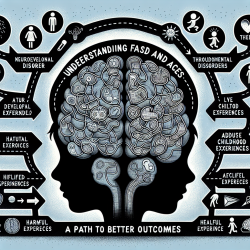Introduction
As practitioners in the field of speech-language pathology, understanding the intricate relationship between cognitive ability and brain morphology is crucial. The recent study titled The bidirectional effects between cognitive ability and brain morphology: A life course Mendelian randomization analysis sheds light on this complex interplay, offering insights that can enhance therapeutic strategies and outcomes for children.
Key Findings
The study employs Mendelian randomization to explore the bidirectional effects between cognitive ability and various brain structures across different life stages. Key findings include:
- A bidirectional relationship exists between cognitive ability and brain morphology, particularly in childhood and early adulthood.
- Higher cognitive ability is associated with larger total intracranial volume and total surface area across all life stages.
- Specific brain regions, such as the posterior cingulate cortex and caudal middle frontal cortex, are linked to cognitive ability.
Implications for Practice
These findings underscore the importance of early intervention in childhood to potentially enhance cognitive ability and, consequently, brain development. Practitioners can consider the following strategies:
- Early Assessment: Regular cognitive assessments can help identify children who may benefit from targeted interventions.
- Tailored Interventions: Develop individualized therapy plans that focus on enhancing cognitive skills, which may in turn influence brain development positively.
- Family Involvement: Engage families in the therapeutic process to create a supportive environment that fosters cognitive and brain development.
Encouraging Further Research
While the study provides valuable insights, it also highlights the need for further research to fully understand the causal mechanisms at play. Practitioners are encouraged to stay informed about ongoing research and consider participating in studies that explore cognitive and brain development in children.
Conclusion
The relationship between cognitive ability and brain morphology is complex and dynamic. By integrating the findings from this study into practice, speech-language pathologists can enhance their therapeutic approaches and contribute to better outcomes for children. For those interested in delving deeper into the research, the original paper provides a comprehensive analysis of the data and findings.
To read the original research paper, please follow this link: The bidirectional effects between cognitive ability and brain morphology: A life course Mendelian randomization analysis.










